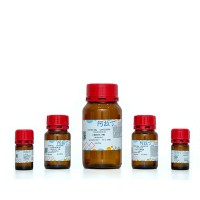染色体免疫共沉淀(Chromatin immunoprecipitation,ChIP)方法程序
互联网
染色体免疫共沉淀(Chromatin immunoprecipitation,ChIP)是一种可在体内用来确定与某一特定蛋白结合或蛋白定位所在的特异性DNA序列的技术。方法程序如下图:
第一步:用甲醛在体内将DNA结合蛋白与DNA交联(DNA-binding proteins are crosslinked to DNA with formaldehyde in vivo.)
第二步:分离染色体(质),剪切后的DNA小片段与结合蛋白结合(Isolate the chromatin. Shear DNA along with bound proteins into small fragments.)
第三步:用特异性
抗体
与DAN结合蛋白结合,用沉淀法分离复合体。反向交联操作释放出DNA,并消化蛋白质(Bind antibodies specific to the DNA-binding protein to isolate the complex by precipitation. Reverse the cross-
 linking to release the DNA and digest the proteins.)
linking to release the DNA and digest the proteins.)
第四步:用PCR扩增特异DNA序列,以确定是否与
抗体
共沉淀(Use PCR to amplify specific DNA sequences to see if they were precipitated with the antibody.)
染色体免疫共沉淀(Chromatin immunoprecipitation,ChIP)是理解染色体(质)的一种革命性工具,它能使我们了解染色体(质)及其相结合的因子之间的时空动态和相互作用。无论是考察单个启动子在很短时间内的变化,还是在整个人类基因组中考察某个转录因子,染色体免疫共沉淀技术都能使我们了解在自然状态下基因是如何被调控的。(Chromatin Immunoprecipitation (ChIP) is a tool that has revolutionized our understanding of chromatin. ChIP has allowed us to dissect the spatio-temporal dynamics and interactions of chromatin and its associated factors (see Figure 1 for the structure of chromatin). Whether looking at minute-by-minute changes at a single promoter, or a single transcription factor over the entire human genome, ChIP has given us significant insight into how genes are regulated in their natural context.)
一、什么是ChIP?
ChIP的原理很简单:选择性富集包含某一特异性抗原的染色体(质)片段。能够识别某一蛋白或目的修饰蛋白的抗体被用来确定抗原在基因组中一处或多处的相对丰度。
ChIP包括以下几个步骤:
1、分离总染色体(质)(需要通过交联使目的抗原固定在染色体(质)与其结合的部位)。
2、将染色体(质)切割成片段(以提高精度)。
3、对切成片段的染色体(质)进行免疫沉淀。
4、免疫沉淀的染色体(质)片段进行分析,确定靶DNA序列水平与其输入的染色体(质)的相对丰度。








